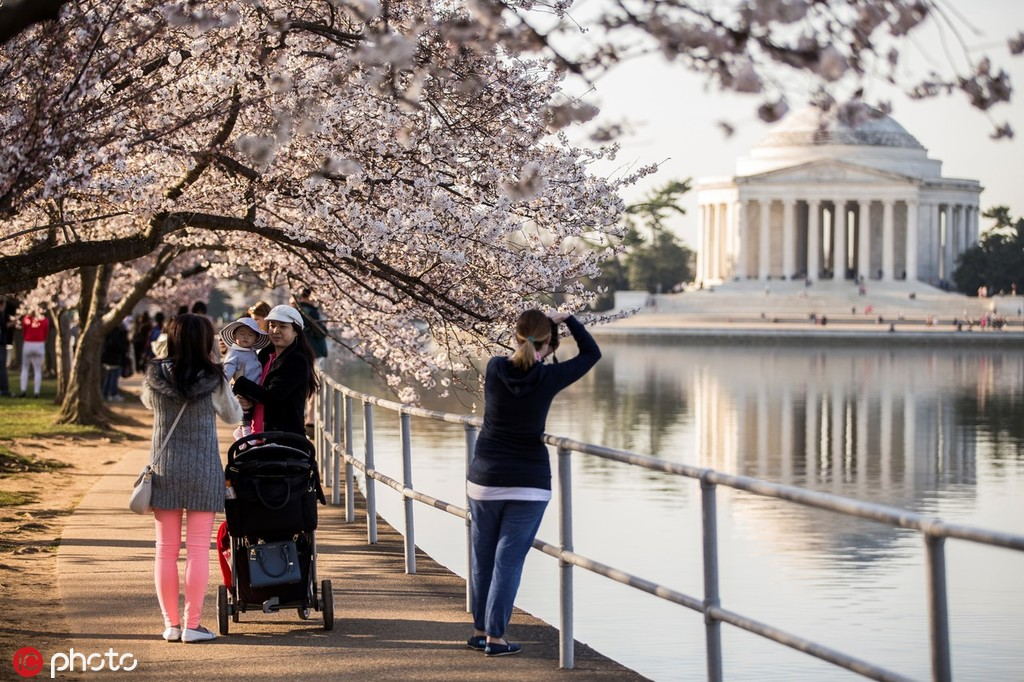Trade dispute could reduce tourism to US
By Liu Yinmeng | China Daily | Updated: 2019-05-31 02:14

A decline in Chinese travel to the United States has garnered diverse opinions on its causes from experts and industry insiders.
According to the US National Travel and Tourism Office, which collects data from US Customs forms, travel from China to the US declined 5.7 percent last year to 2.9 million visitors. This is the first time since 2003 that Chinese travel to the US has dropped from the previous year.
There has been a decline in the number of visitors from the Chinese mainland, said Jonathan Liu, assistant president of America Asia Travel Center, a travel agency headquartered in Monterey Park, California.
Liu said that business from Chinese tourists has been slow in recent months despite the period being the peak tourism season. He said people began canceling holiday trips to the US as early as November and December, a popular period for travel to the country.
With the travel numbers coming in amid the ongoing US-China trade friction, some industry insiders said that the trade dispute between the two countries might have a key role in the declining number of Chinese visitors.
"The difficulty with trade skirmishes is that the unintended consequences are hard to predict, and we were concerned from the start that tensions with China might affect business and other travel to the US," Tori Barnes, US Travel Association executive vice-president of public affairs and policy, said in a statement.
"The irony is that travel exports have been the greatest success story of our trade relationship with China, generating a $30 billion surplus and accounting for 19 percent of all our exports to that country in 2017," she added.
Larry Yu, a professor of hospitality management at the George Washington University School of Business, said the US has had a trade surplus with China in travel over the last decade.
The number of Chinese tourists to the US has increased dramatically over the past two decades.
The total number of Chinese arrivals in 2000 was 249,000, the US tourism office said. That number grew to 802,000 in 2010, and expanded to 3,174,000 in 2017.
"The Chinese visit the US in strong numbers, and they spend an average $6,700 per trip — about 50 percent more than the average international visitor," Barnes said.
Yu said the trade dispute is a partial factor in the decline of Chinese travel to the US as it has created a mindset among some Chinese travelers to not contribute to the US economy at a time when the two countries are embroiled in a trade dispute.
"When something happens economically, politically or socially, in a certain destination, consumers change their minds and decide to put off trips to that destination. They want to go to other places (and) will continue to travel," Yu said.
But Yu said other factors, such as the change in Chinese travelers' behavior, and the growing number of choices they have when it comes to destination countries, all played a more substantial role in the recent drop of Chinese travel to the US.
"They are not just coming in to do the sites, take pictures and go shopping. Now they want to have a deeper experience and immerse themselves in the local culture, in local traditions and in local activities. So they like to stay a little longer at destinations," he said.
Dai Bin, president of the China Tourism Academy, shared a similar view. "The first big reason for the decrease is that destinations such as Thailand and Japan and countries in Central and Eastern Europe have lured Chinese travelers from the US with much more convenient flights and friendly visa policies. Also, the trade dispute did affect the tourism market."
Some airlines and travel service providers are taking a wait-and-see approach in case of financial losses due to fluctuations in currency exchange rates. The renminbi is currently trading at around 6.91 yuan to the US dollar, while a year ago it was stronger at 6.41.
Dai has an objectively positive attitude toward the future development of China-US tourism.
The Ministry of Culture and Tourism reported that Chinese outbound travel remained strong last year. Chinese tourists made a total of 149.72 million outbound trips in 2018, a rise of 14.7 percent from the previous year.
Although the US is still one of the top attractions for Chinese travelers, they are also increasingly looking toward other regions in the world for unique experiences.
India, for example, has been an emerging travel market for Chinese visitors, Yu said. South America has also attracted strong interest from Chinese travelers in recent years.
In addition, Chinese travel trends are rapidly evolving. They are increasingly traveling in smaller groups and are renting cars overseas. They are also depending more on mobile applications, such as WeChat, to plan trips, Yu said.
Cheng Si in Beijing contributed to this story.























